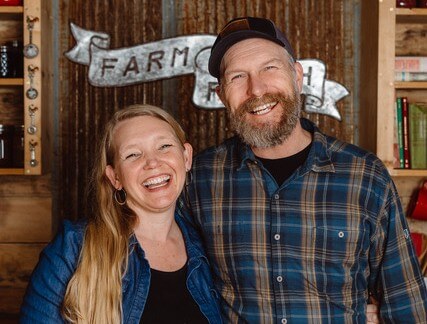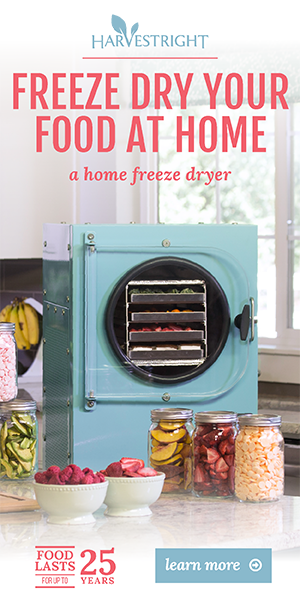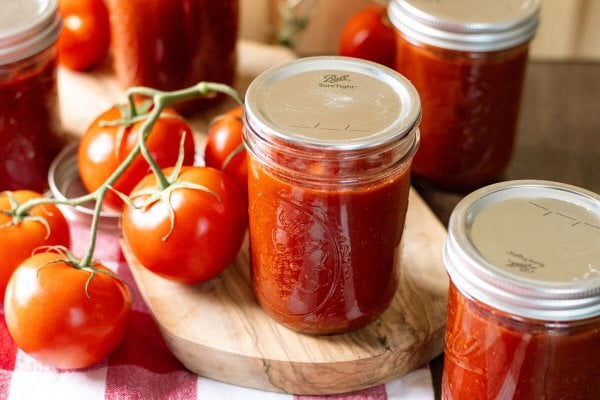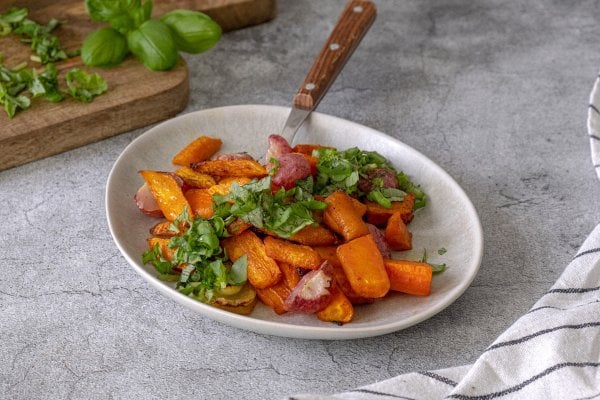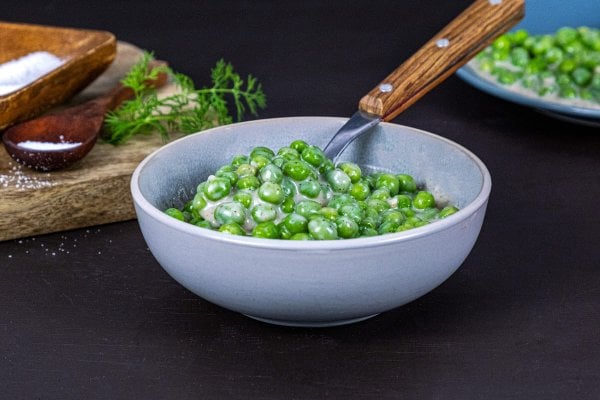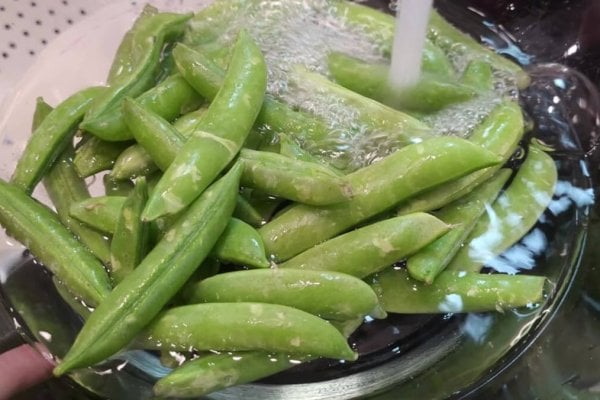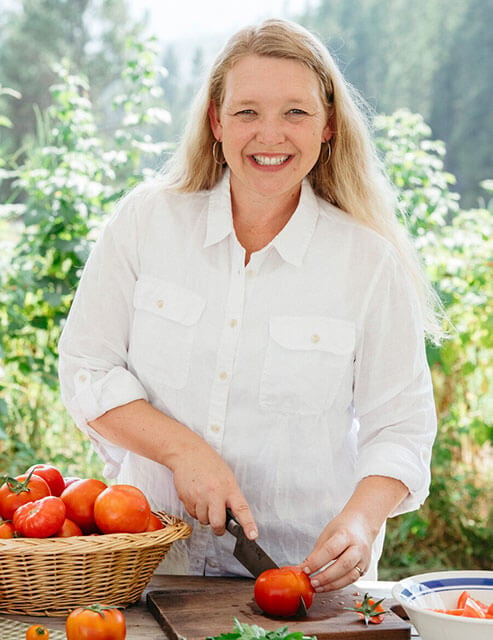Finding healthy and convenient food options for your little ones is always a top priority. That’s why freeze dried baby food is gaining popularity among parents who want to provide nutritious meals without sacrificing convenience.

When it comes to nutrition, freeze dried baby food packs a powerful punch. The freeze drying process preserves the natural flavors and nutrients of fresh ingredients, making sure that your little one gets the best of both worlds. It’s a fantastic way to introduce a variety of flavors and textures, helping babies develop their taste preferences and enjoy a well-rounded diet.
Table of Contents
ToggleWhy I Freeze Dry Baby Food
It’s not always easy homesteading with children or homesteading while pregnant, but it’s always worth it!
While preparing for a new baby on the homestead, I knew we’d want to make homemade baby food again. Baby Nathaniel loves his freeze dried yogurt bites and all these baby food recipes. However, there are some times when our family is on the go and feeding him a healthy nutrient-dense meal is a little bit more difficult.
Enter the freeze dryer! With freeze drying our homemade baby food, I can pack up his food and have it ready in minutes when on the road. Freeze dried baby food is also a lifesaver if time gets away from us and he’s ready to eat before we have time to prepare his meal. It’s just one more trick I use to get three home-cooked meals on the table every day!

Advantages of Homemade Baby Food
When it comes to feeding our little ones, we all want to make sure they receive the best nutrition possible. That’s why homemade baby food is a great option for parents. Not only does it allow us to have control over the ingredients we use, but it also offers several advantages over store-bought options.
- Organic/Homegrown Ingredients – One of the biggest advantages of making homemade baby food is the ability to use organic and homegrown ingredients. Organic fruits and vegetables are grown without the use of synthetic pesticides and fertilizers, making them a healthier option for your baby.
- Eliminating Unnecessary Sugar – Many commercially processed baby foods use too many fruits in their blends, which encourages babies to develop a sweet tooth. We try to avoid too much fruit for babies at a young age and focus more on feeding them savory dishes. This provides more rounded nutrition and develops a taste for healthier options without the need for sugar.
- Enhanced Nutrition – When you make baby food at home, you have complete control over the ingredients and cooking methods. This means you can pack each meal with nutrient-rich foods that cater to your baby’s specific needs. Homemade baby food allows you to focus on incorporating a wide range of ingredients beyond fruit and vegetable blends, providing a balanced and nourishing diet for your little one.
- Encourages a Taste for Healthy Foods – In addition to having control over ingredients, homemade freeze dried baby food offers the flexibility to customize flavors and textures according to a baby’s preferences and dietary needs. It allows parents to introduce a wider variety of tastes and encourages healthy eating habits from an early age.

Tips for Making Freeze Dried Baby Food
A few tips can go a long way in efficiently and successfully preparing freeze dried baby food. Here are some essential tips to keep in mind:
- Gather the necessary supplies – Before you begin, make sure you have all the required supplies on hand. These may include your freeze dryer, a blender or food processor, airtight containers for storage, and food-safe trays or molds for portioning out the food.
- Choose high-quality ingredients – Opt for fresh, organic fruits and vegetables to provide the best nutrition for your baby. Remember to wash the produce before using it in your recipes. You can also include ingredients like yogurt or grains for added variety.
- Follow instructions carefully – Each freeze drying machine may have specific instructions for optimum results. Make sure to read and follow the manufacturer’s instructions when preparing your baby food. This will help make sure that the food is properly freeze dried and retains its nutritional value.
- Prepare the food in small batches – It is recommended to freeze dry baby food in small batches to maintain freshness and prevent waste. This will also allow you to experiment with different flavors and textures as your baby’s taste preferences develop.
- Store the freeze dried food properly – After freeze drying, store the food in airtight containers or resealable bags to maintain its shelf stability. Label each container with the date and contents to keep track of freshness.
- Rehydrate the food before serving – When it’s time to feed your baby, properly rehydrate the freeze dried food by adding warm water, breast milk, or bone broth.

Supplies Needed
To make delicious and nutritious freeze dried baby food at home, you’ll need a few essential supplies. These tools and equipment will help you prepare and preserve your homemade creations.
- Freeze Dryer – I use and recommend the Harvest Right freeze dryer. If you are considering purchasing one, learn which is the best Harvest Right freeze dryer for you.
- Parchment Paper – You can optionally line your trays with parchment paper or reusable silicone mats from Harvest Right, making removing your finished product a snap.
- Ice Cube Tray or Silicone Mold – These optional silicone molds come in different sizes to make conveniently portioned servings.
- Mini Food Processor – A mini food processor is ideal for making small batches of baby food. But you can also use a full-sized food processor like this Breville food processor or a high-powered blender. These tools are essential for pureeing fruits, vegetables, and other ingredients into smooth and consistent baby food textures prior to freeze drying.
- Deep Freezer – For best results, the baby food should pre-freeze before freeze drying. If you don’t have a deep freezer, that’s okay; just try to keep the door shut on your standard freezer as much as possible.
- Cling Wrap – Covering the baby food while it is in the deep freezer will protect it from absorbing other odors.
- Storage Containers – Storing freeze dried food properly is crucial to extend its shelf life and maintain its quality. Choose airtight containers such as Mason jars or Mylar bags to store your homemade baby food. These containers will keep your food fresh and safe for your little ones.
- Labels and Marker – Organizing your homemade baby food is easier with labels and markers. Label each container with the name of the food and the date it was made. This way, you’ll be able to keep track of the freshness of your baby food and ensure that you’re using the oldest ones first.

Ingredients Needed
- Homemade Baby Food – Learn the essentials in developing your own nutritious recipes along with the blends I use to make homemade baby food here. Homesteading Hack: Keep in mind that when freeze drying these baby food recipes, they’re higher in fat, so they won’t store as long as a single ingredient or low-fat baby food recipe. At room temperature, they’ll keep for one month. If you’re looking for long-term storage, the freeze dried baby food should be stored in the freezer and can be kept there for up to a year. Then, use within one month once removed from the freezer.

How to Freeze Dry Baby Food
Remember that freeze drying will not kill the healthy bacteria found in cultured ingredients like yogurt. With that in mind, freeze drying does not kill harmful bacteria either, so proper handling using clean, food-safe techniques is especially important when preparing foods for babies.
- Prepare your favorite recipe for homemade baby food.
- Spoon prepared food into ice cube trays or silicone molds.
- Cover trays with cling wrap and place trays in a freezer for at least 2 hours or, for best results, up to 24 hours.
- Bring your freeze dryer to the recommended temperature before removing the baby food from the freezer.
- If desired, prepare freeze dryer trays with parchment paper or silicone mats.
- Remove trays of baby food from the freezer, discard plastic wrap, and transfer the cubes to the freeze dryer trays.
- Load the trays in the freeze dryer, put the insulating cover in place (for older models), and shut the door.
- Set the timer for 20 hours, checking when the signal goes off, and if it’s not completely freeze dried, return it to the freeze dryer for 2-hour increments until done.

How to Tell If Freeze Dried Baby Food Is Done
The freeze drying process will vary from batch to batch depending on which freeze drying machines are used, the ingredients used in your homemade baby food that affect the thickness of the product and the amount of moisture originally in the product.
Testing your freeze dried baby food for doneness is crucial to make sure they are completely freeze dried and ready for long-term storage. When the freeze dryer has completed its cycle, remove the trays, choose the largest piece and break it in half. (If freeze drying multiple baby food blends, choose one of each recipe.)
The finished baby food should be almost weightless, and the texture should be similar to styrofoam. It should never feel cold to the touch; if so, moisture remains in the baby food. Return the trays back into the freeze dryer, add more drying time, and recheck them in a couple of hours.
Homesteading Hack: Wait to shut down your freeze dryer until you have confirmed that the baby food does not need extra drying time.
How to Rehydrate Freeze Baby Food
There are different methods for rehydrating freeze dried food, but when rehydrating baby food, it’s important to consider the proper ratio of water to freeze dried product. Too much can result in diluted nutrition for your baby, while too little can make the food an undesirable texture.
You can be exact about this by weighing your baby food before freeze drying and again after freeze drying. The difference between the two weights is how much water, breast milk, or other age-appropriate liquids (by weight) you want to add back in.

How to Store Freeze Dried Baby Food
For long-term storage, freeze dried baby food must be kept in airtight containers out of direct light. Oxygen is the enemy of freeze dried food, so remember the importance of oxygen absorbers. Make sure to label your food with the date and food you freeze dried.
Homesteading Hack: While Mylar bags with oxygen absorbers work great, I like using glass jars because they are reusable. For this recipe, I recommend using smaller jars with a vacuum sealer. This will cut down on the number of times the jar needs to be opened, limiting any unnecessary oxygen exposure to the remaining baby food.
With a few simple supplies and these easy-to-follow instructions, preparing freeze dried baby food at home becomes a hassle-free process. You can simply rehydrate the food to the perfect consistency and rest assured that your baby receives a nutritious and delicious meal every time.
Did you try freeze drying baby food? If so, please leave a star rating in the recipe card below, then snap a photo of your freeze dried food and tag us on social media @homesteadingfamily so we can see!

Freeze Drying the Harvest
While I love my freeze dryer for preserving our garden produce and healthy convenience meals, it has also become a workhorse for supporting our natural approach to healthcare.
In my book Freeze Drying the Harvest: Preserving Food the Modern Way, I’ll teach you how to preserve vitamin-packed super-smoothies for a hot summer day, freeze dry powerful medicinal herbs, and immunity-boosting fire cider bites to get you through cold and flu season.
There has been such a high demand for this tested and trusted information that I have also added a Freeze Drying Masterclass to my online video classes in the Abundant Pantry.
These resources can be purchased separately or as companions, so whether you choose the book or the masterclass, you will receive all the information you need to have a pantry packed full of healthy food year-round!

FAQ
Freeze dried baby food offers several advantages. It is healthy, convenient, and shelf-stable, making it a great option for busy parents. It also retains the nutrients of fresh fruits and vegetables, providing essential nutrition for your little ones.
Freeze dried baby food has several advantages over other options. It offers the benefits of homemade baby food without the hassle of preparing it fresh every day. It is also convenient to store and carry, making it perfect for on-the-go feeding.
Homemade baby food allows you to have control over the ingredients you use. You can choose organic ingredients to give the highest quality and nutrition to your baby. Additionally, making baby food at home can be more cost-effective compared to store-bought options.
To make freeze dried baby food at home, you will need a food dehydrator or freeze dryer. It is important to use fresh and high-quality ingredients, such as organic vegetables and yogurt. Follow the step-by-step instructions for preparing and storing freeze dried baby food properly.
Yes, freeze dried baby food is ideal for long-term storage. It has a long shelf life, often lasting up to a year or more. This makes it a convenient option to have on hand for emergencies or when you need a quick and nutritious meal for your little one.

Other Posts You May Enjoy
- Homemade Baby Food
- How to Get 3 Home-Cooked Meals on the Table Every Day
- Homesteading with Children
- Homesteading While Pregnant
- Preparing for a New Baby on the Homestead
- Freeze Dried Yogurt Bites

Freeze Dried Baby Food
Equipment
- Freeze Dryer
- parchment paper or silicone trays
- ice cube tray or silicone mold
- freezer
- Storage Containers
- Oxygen Absorbers
- labels/marker
Ingredients
- baby food
Instructions
- Prepare your favorite recipe for homemade baby food.
- Spoon prepared food into ice cube trays or silicone molds.
- Cover trays with cling wrap and place trays in a freezer for at least 2 hours or, for best results, up to 24 hours.
- Bring your freeze dryer to the recommended temperature before removing the baby food from the freezer.
- If desired, prepare freeze dryer trays with parchment paper or silicone mats.
- Remove trays of baby food from the freezer, discard plastic wrap, and transfer the cubes to the freeze dryer trays.
- Load the trays in the freeze dryer, put the insulating cover in place (for older models), and shut the door.
- Set the timer for 20 hours, checking when the signal goes off, and if it’s not completely freeze dried, return it to the freeze dryer for 2-hour increments until done.
- Store baby food out of direct sunlight in well-labeled containers with oxygen absorbers.

